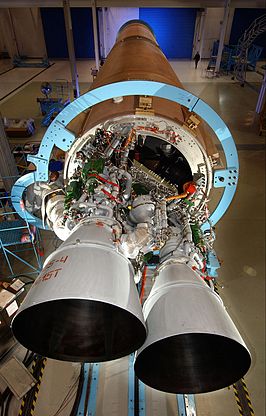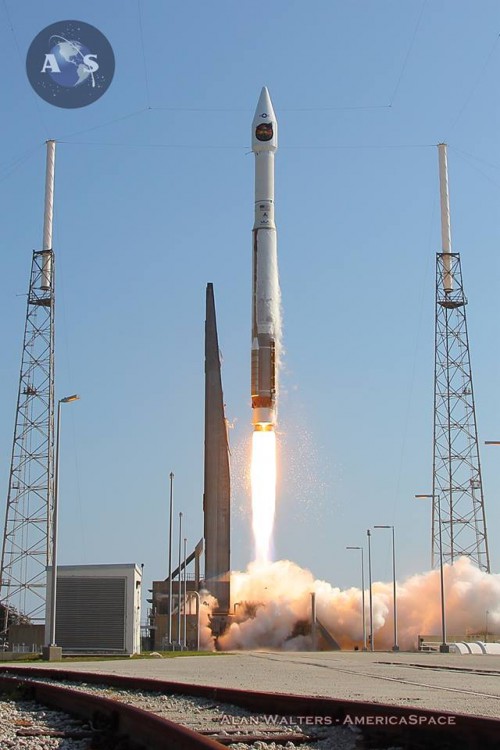
United Launch Alliance (ULA) has endured a lot of criticism lately over the use of Russian-made RD-180 engines on their Atlas-V rockets, concerns which came about in light of political tensions between the U.S. and Russia over Russia’s recent de facto annexation of the Ukraine’s Crimea region. In the time since, the U.S. has imposed sanctions on Russia, and as a result some Russian officials have made various comments intentionally aimed at reminding the U.S. that, without them, we have no crewed transport to and from the International Space Station or access to the RD-180 engines that power the Atlas-V rocket—the launch vehicle responsible for delivering most of America’s most sensitive national security assets into orbit in support of our national security interests.
Elon Musk, the president and CEO of SpaceX (ULA’s main competitor), may have said it best, “In light of recent events in Russia the Atlas-V cannot possibly be described as providing ‘assured access to space’ for our nation when supply of the main engine depends on President Putin’s permission.” That comment, made on March 5 during a hearing on National Security Space Launch Programs before the U.S. Senate Appropriations Subcommittee on Defense, was directly aimed at discrediting ULA’s reliability, and the U.S. Congress heard Musk’s comments loud and clear.

So did Russian Deputy Prime Minister Dmitry Rogozin and Federal Space Agency Chief Oleg Ostapenko, who both announced in May Russia’s intent to limit exports of the RD-180 for U.S. military launches (comments made in response to U.S. sanctions against Russia). Although neither ULA or the U.S. Air Force (ULA’s biggest customer) have received any official written notification making good on that threat, the U.S. is taking it very seriously, and as a result a bill recently introduced in the Senate to develop a plan to produce a domestic RD-180 alternative was approved. The House Armed Services Committee also passed legislation in early May for the Pentagon to spend $220 million in 2015 to move forward with development of a new American-made Atlas-V engine.
ULA may have a two-year supply of RD-180s stockpiled, but it will take five years (and an estimated $1 billion) to bring a new domestic alternative to life and into routine operational service. The current Altas-V manifest calls for more than twice as many flights than ULA has RD-180 engines stockpiled to support (15 engines), and if Russia makes good on their threat to cut off the RD-180 supply, then ULA and the United States would be in serious trouble. Current estimates suggest a whopping $5 billion loss if ULA were to lose supply of the RD-180 today—costs associated with switching payloads to fly on ULA’s other workhorse rocket the Delta-IV (ULA has already started work to ramp up Delta-IV production, just in case). The Delta-IV is also more expensive to produce, and in the event that ULA lost the Atlas-V the Delta-IV program would have to pick up the slack, which would force payloads already scheduled to fly on the Atlas to launch 3-4 years later than expected.
The drama has forced ULA and the U.S. government to seriously investigate the possibility of starting production of a new American-made engine to replace the RD-180. Doing so would eliminate any dependence on Russia for launching the Atlas-V, and on June 16, 2014, ULA announced their intention to invest in the development and production of a domestic RD-180 alternative, and America’s most experienced and reliable launch service provider has already signed several commercial contracts with multiple American companies to investigate next-generation liquid oxygen/hydrocarbon first stage propulsion concepts.
VIDEO: Witness the power of the RD-180 in action, up close & personal. With thanks to Matt Travis at Zero-G News and Jeff Seibert with Wired4Space for the fantastic footage.
“As the nation’s steward of the launch industrial base and the only company certified to launch our nation’s most critical missions, it is incumbent upon ULA to bring forward the best solutions to preserve that capability for the future,” said ULA president and CEO, Michael Gass. “While the RD-180 has been a remarkable success, we believe now is the right time for American investment in a domestic engine.”
The idea to have ULA co-produce the RD-180 domestically has been considered, too, but doing so would still require the expertise of Russian engineers, and co-producing the RD-180 is estimated to cost around $1 billion anyway. So it makes perfect sense to instead spend the same amount of money to develop a truly American-made engine anyway, which also adds the benefit of eliminating dependence on Russia to launch government payloads.

According to ULA, the companies collaborating on the project will “conduct technical feasibility analysis, develop high fidelity plans, identify schedule, cost and technical risks, and identify cost estimates to meet aggressive recurring cost targets.” ULA did not specify which companies it has signed contracts with, but the aerospace giant expects to select its future concept and engine supplier by the fourth quarter of 2014.
Development of an RD-180 alternative, which won’t be ready to fly until 2019, does not mean ULA intends to completely stop using the RD-180—for now ULA has no choice. Instead, ULA will continue to work with U.S.-based RD AMROSS (supplier of the RD-180 to ULA) to evaluate the long-term feasibility of the RD-180 in competition with the anticipated new engine. Both ULA and RD-AMROSS are currently evaluating product improvements, U.S. production, and other enhancements to enable its future viability.
“Given that ULA is the only certified launch provider of our nation’s most important satellites, it is critical that America preserve current capabilities and options while simultaneously pursuing this new engine,” said Gass.
“ULA has a number of very promising alternatives and we are working with the very best propulsion companies in America,” said Dr. George Sowers, ULA’s vice president of Advanced Programs, and lead for the propulsion study. “There are many exciting advanced technologies that are mature and can be used to enhance our capabilities and our competitiveness.”
To date, ULA’s Atlas-V, powered by the Russian RD-180s, has achieved an impressive 100 percent success rate on 46 total missions since 2002 (most recently with the successful launch of the classified NROL-33 satellite for the U.S. National Reconnaissance Office). Although SpaceX, ULA’s main competitor, is currently in the process of earning U.S. Air Force certification to bid on U.S. Government launch contracts, ULA is currently the only certified launch provider for the Department of Defense.
“I would love to see us produce an engine,” said head of U.S. Air Force Space Command, General William Shelton on May 20. “If you look at our history, when was the last time we produced an engine? It’s been a long time. Our industrial base has kind of withered a bit. There’s always a chance, just like we’re facing today, that you’ll run into a rainy day. And the rainy day looks kind of daunting.”
Want to keep up-to-date with all things space? Be sure to “Like” AmericaSpace on Facebook and follow us on Twitter: @AmericaSpace



